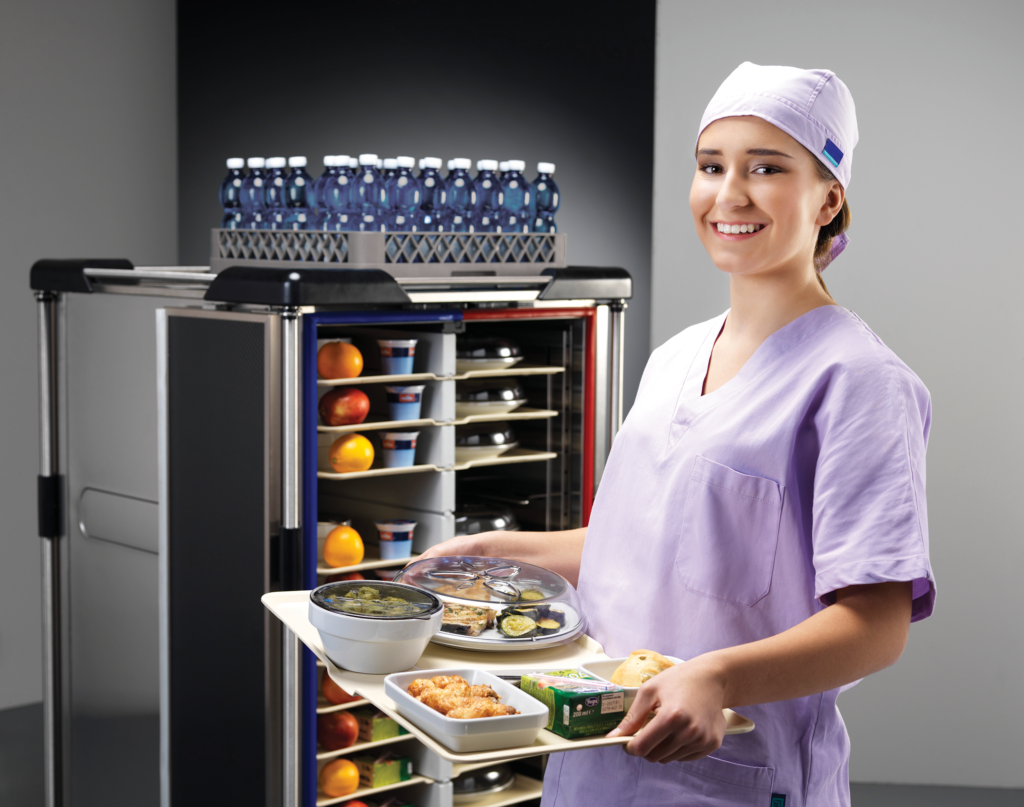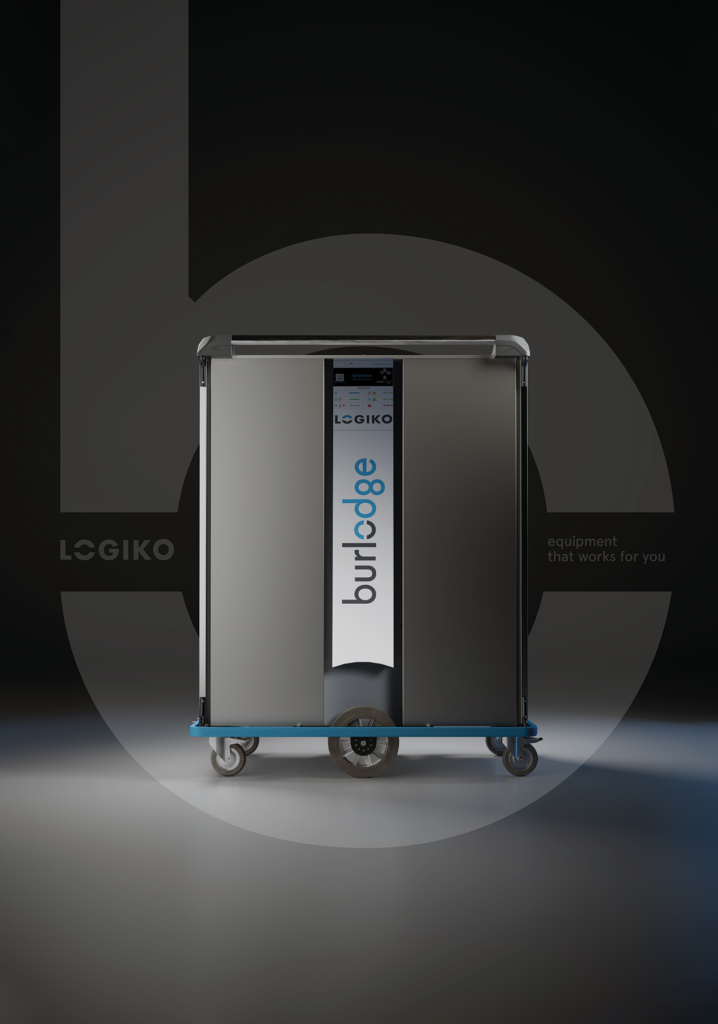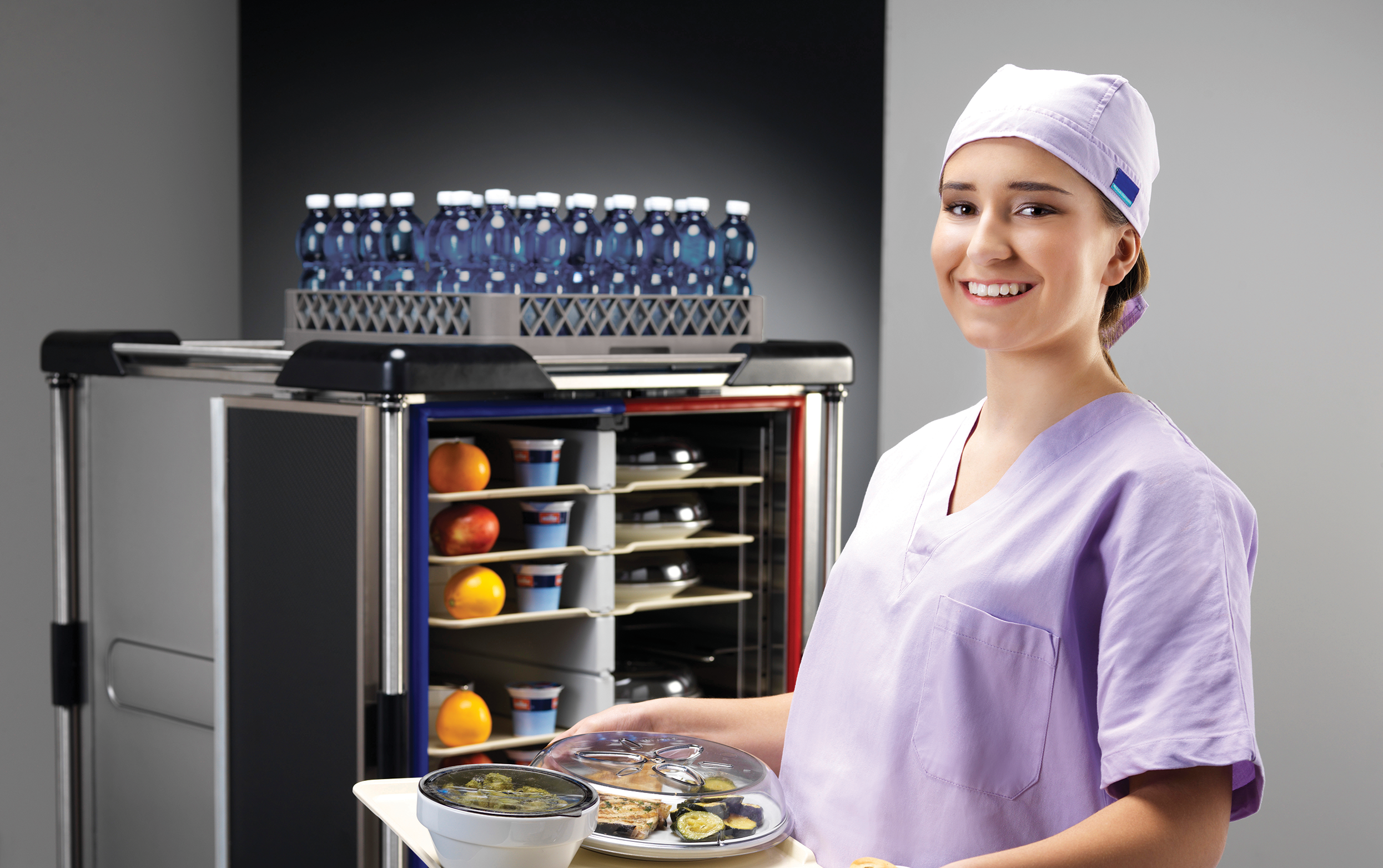The “Room Service” model has quickly become the expectation within the healthcare industry. Doing away with dedicated service mealtimes and excess food wastage, room service is changing the way people feel about food in Australian healthcare.

What is the “Room Service” method?
Meal delivery in the Australian healthcare industry is constantly evolving. From cook-chill, pre-prepared meals, and fresh-cook, each has delivered its own set of challenges and benefits. However, the drive for sustainability, freedom of choice and diner experience has evolved the on-demand, hotel-style room service model.
We first saw the rise of “room service” in the mid 2000’s in the United States with the Aladdin Temp-Rite Heat on Demand induction meal delivery system. Hospital funding allocations began using a satisfaction survey to gauge the patient satisfaction for their stay in the hospital: the higher the satisfaction results, the higher the funding.
Improving the scores became a matter of necessity. Hospitality catering managers around the country implemented dining on demand style systems to provide choice, quality, 5-star presentation and accessibility to meals around the clock. Ensuring that satisfaction scores remained high at all times.
How can I implement this method into my facility?
In Australia, our reason for evolving to room service is slightly different with our focus being on the patient, dining experience, improving nutritional intake, monitoring consumption, being culturally inclusive, and on reducing food wastage and costs. The old cliché “you eat with your eyes” has become the overall mantra. Contemporary tray presentations coupled with high quality ingredients and modern cooking techniques have revolutionised healthcare stereotypes, creating a “restaurant-like” dining experience.
Ensuring meals arrive at the right temperature to the diner is a key factor in the planning, implementation, and day to day functionality of the room service model. The meal delivery system needs to maintain not only the temperature and presentation requirements, but also meet WHS needs of the staff operating the system. The selection of the system is determined by the geographical location of the facility, kitchen design, facility operations and the staffing levels. Key considerations are made for keeping the hot food hot and the cold food cold.

What equipment should I be using?
Two methods of meal delivery have proved themselves as both reliable and consistent for a room service model; the first being heated and chilled trolleys, allowing the freshly prepared meals to hold temperature until delivery.
Burlodge has long been the preferred choice for meal delivery trolleys in the Australian healthcare industry. When it comes to room service, it has transitioned to suit the ever-evolving market and offer a modern and easy to use delivery system.
The second method is an insulated tray ware style system with induction-heated bases. Aladdin Temp-Rite has been a familiar brand throughout Australian healthcare and, now with the introduction of a brand-new colour range, it has been a very popular transitional system with the capability of holding hot food for up to 75 minutes. With the use of a standard plating line, the induction activator converts to a long hot holding option for room service models.
At Moffat, we have been fortunate to be at the forefront of seeing these ideas come to fruition. The constant evolution of Burlodge meal delivery trolleys and the Aladdin Temp-Rite Heat on Demand system have been an industry leading solution in the rise of room service.
If you are interested in finding out more information about our large range of products, get in touch with us today!










